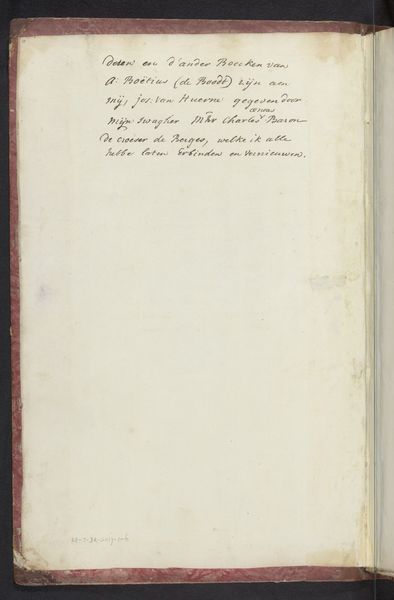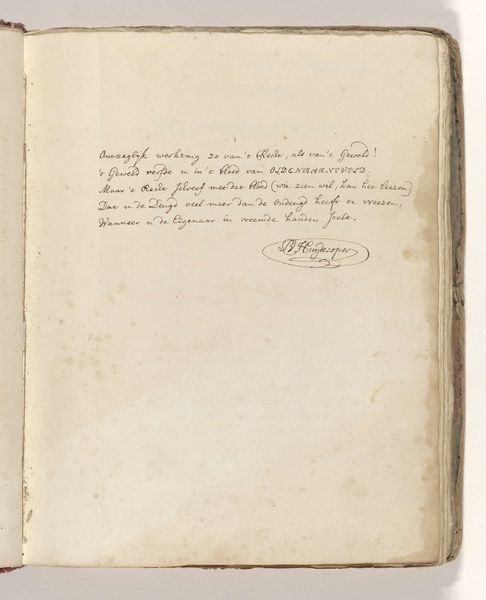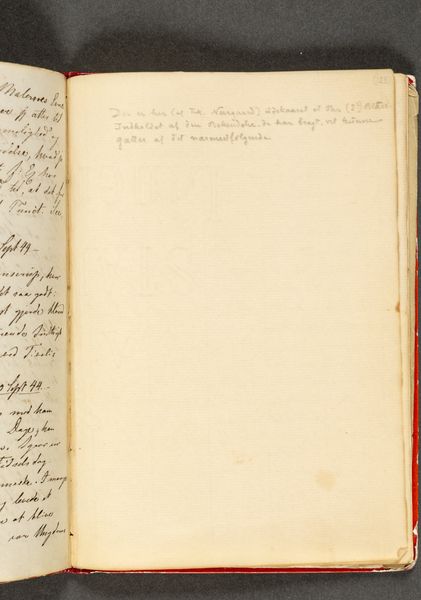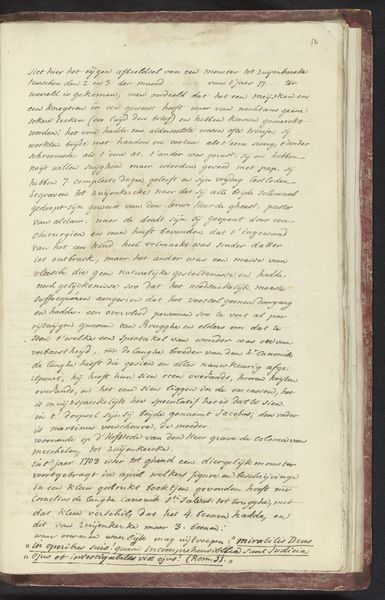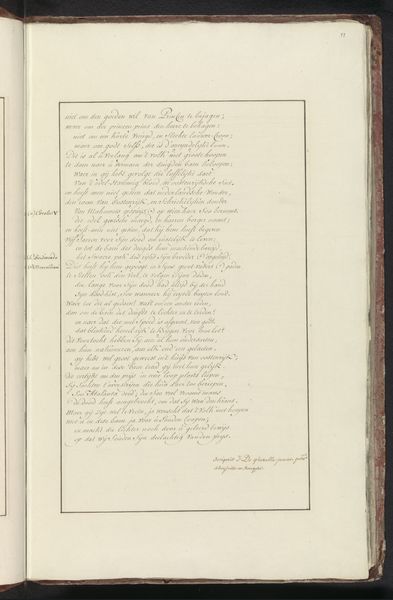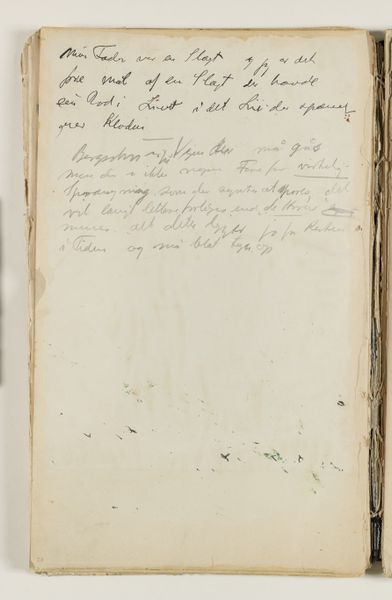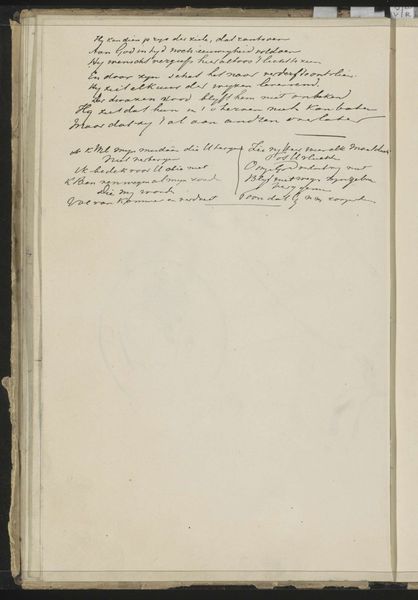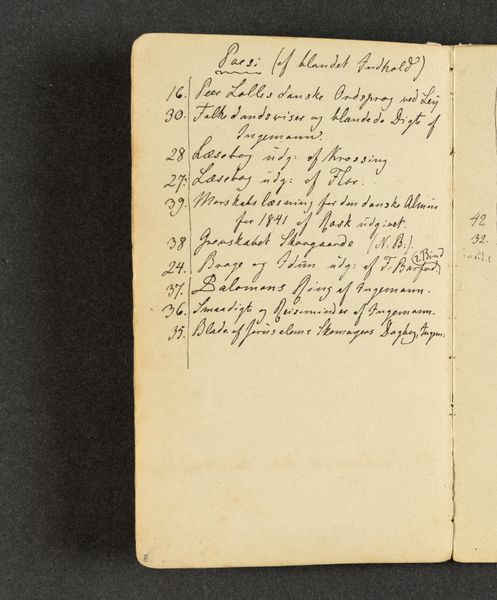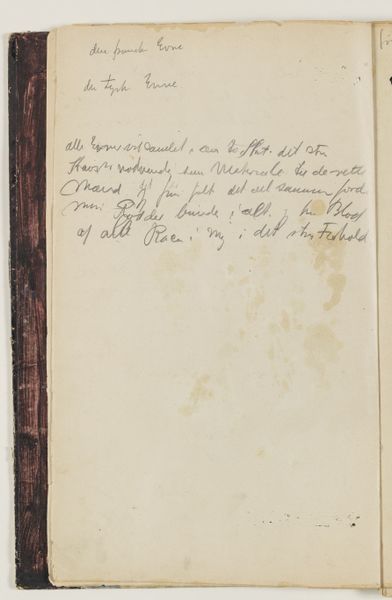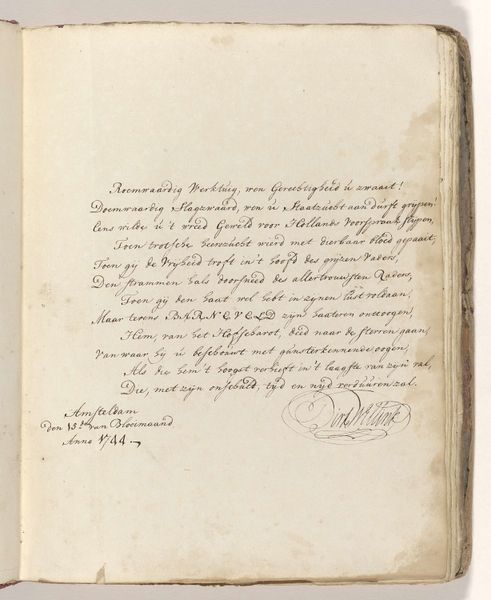
drawing, paper, ink
#
drawing
#
paper
#
ink
#
coloured pencil
#
romanticism
Dimensions: height 200 mm, width 180 mm
Copyright: Rijks Museum: Open Domain
Curator: This is "Briefje van J.A. van Huerne over een tong (1801)," dating from around 1809-1814. The artist is Joseph van Huerne. It’s a drawing in ink on paper. Editor: The sepia tones immediately lend it a feel of antiquated secrecy, like peeking at a historical document or diary entry. Curator: Indeed. It appears to be a note written in Dutch detailing information about, perhaps surprisingly, a type of fish or tongue. It details the properties of fish that may live near or affect the local stone. The style seems to evoke the spirit of Romanticism. Editor: Absolutely. I notice repeated references to 'stones,' specifically the text speaks of "stones that do grow". Even absent the specific biological context, the symbolic potential there is rich, suggesting growth, resilience, even transmutation over time. Curator: I agree. It also talks of the color “white”. During this time, depictions of simple scenes had the objective to capture ordinary details or reveal universal themes about humanity or even scientific discovery. This note provides insight into local food habits and scientific investigation from the 19th Century. The “seldsaemreijy,” could show something like how something being tasty enough may be an amazing act by God, such as growing life. Editor: I find it incredibly telling how the writing is framed within what looks like a book or perhaps a bound collection of notes. It accentuates the air of scholarly, hermetic wisdom, where knowledge is contained, literally, within pages. What this actually shows seems a little less clear as there may be a sketch, but if that is indeed true, there may have been a level of local scientific practice or trade being done. Curator: It really makes you consider how personal observation was entwined with early scientific exploration. It underscores the subjective, firsthand experience in defining what was then understood about the natural world and suggests social-economical relations within society during the scientific developments. Editor: And it really highlights the continuity between lived experience, cultural memory, and the slow, often meticulous gathering of knowledge, stone by stone.
Comments
No comments
Be the first to comment and join the conversation on the ultimate creative platform.
